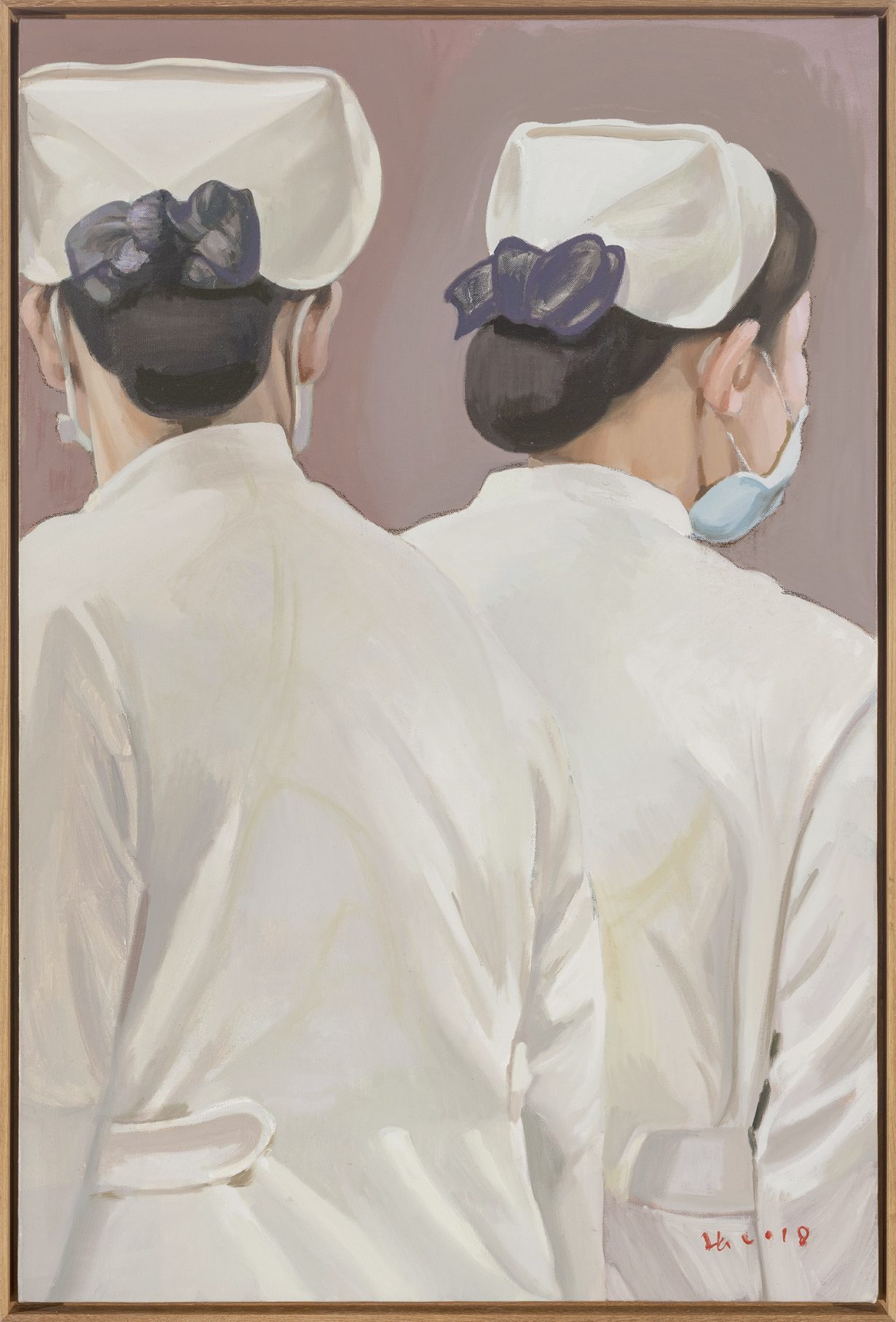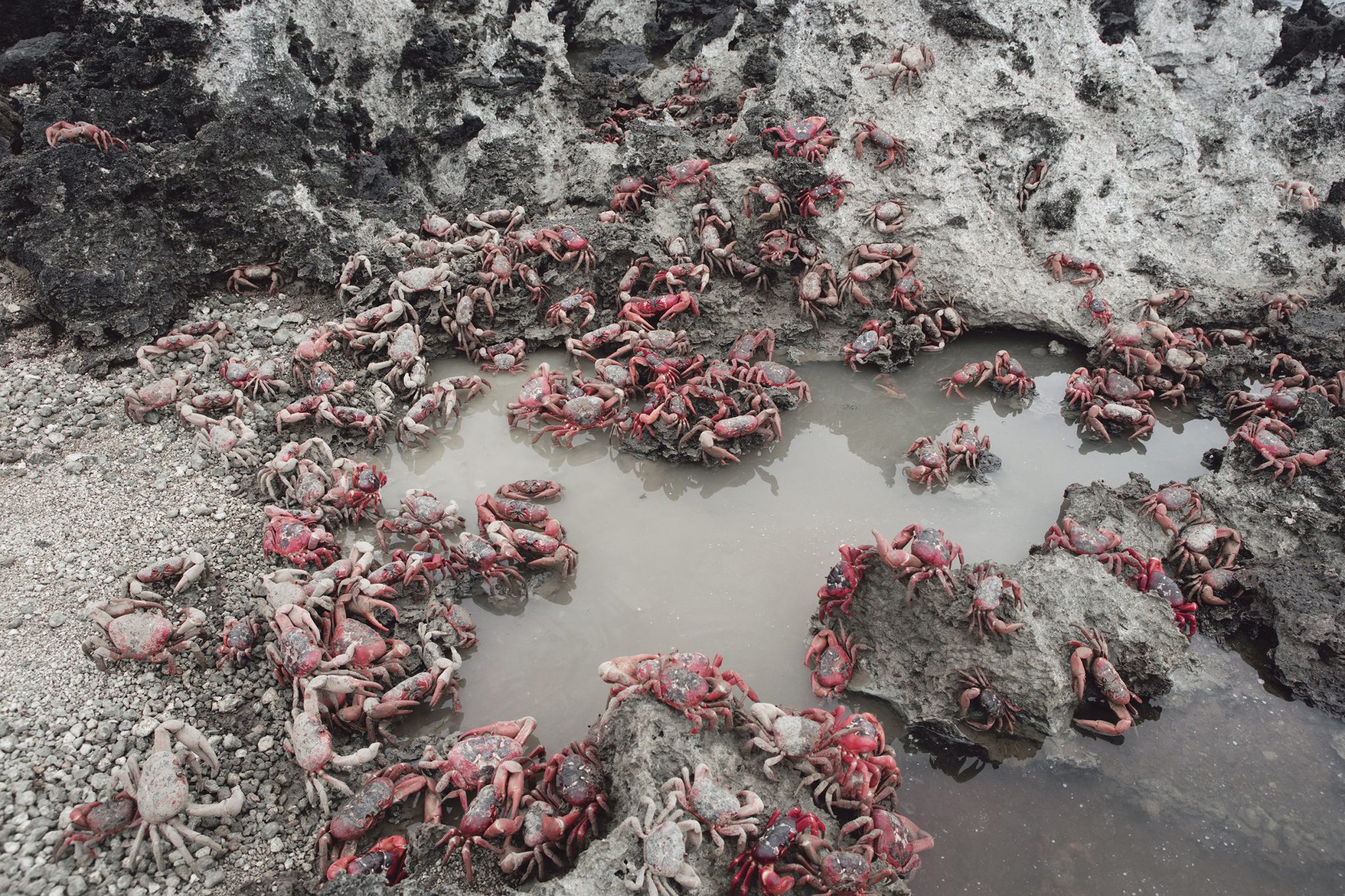In some parts of the globe, it seems, one can prudently resume life in a post-COVID-19 world. In May, UCCA Beijing opened its first show of 2020, Meditations in an Emergency, inviting viewers to ‘meditate’ here. Wearing masks makes me hear my breathing distinctly, and the rhythm already puts me into a premeditative state. In Taipei/Berlin-based artist Musquiqui Chihying’s three-channel videowork The Alp (2014), a single bed appears raised five metres up on a wooden frame, while an even taller streetlamp illuminates it. The bed (this time with a metal frame) is also present in the gallery, installed next to the video. In the video, a man suffering from insomnia attempts to sleep, and adopts a bed in three acts, each shown on a separate channel: first, on a mattress installed in a large chest freezer at a supermarket stacked with packaged food; then on the open land of a meadow under the Alps, where a rifle fitted with a bayonet hovers above him; and finally, he is seated on the bed, possibly in a stable, with a horse pacing around. Once something that busy metropolites had to fight for, peaceful sleeping time is now plentifully available to us – perhaps in an isolation ward or here, on this high bed. What is rare and what is in excess have been subverted during the pandemic, and the first part of the show, ‘The Fragile Everyday’, calls into question the obsession with normality or the attempt to bring back normal order of any kind.

In the second part, ‘Vital Signs’, we are forced to confront the biological signs of life – after all, expensive ECMO machines, now frequently mentioned in the press, have become part of our everyday vocabulary. Such a machine’s purpose is to keep humans alive. Li Liao, however, wants to accomplish more in life than just breathing. He takes it to the ironic extreme in his video To Be a Better Man (2019), in which he exercises his core muscles while reciting English every day. After a year his perfect six-pack abs are overlaid by the sound and text of his English reading, pounding (his abs and the superimposed text) in front of our eyes. The self-motived middle-class can do more than just breathe.

‘Beyond Animality’ and ‘Othered Movements’ reconsider the condition of interactions between humans and animals. Last Cat on Christmas Island (2016) charts Robert Renhui Zhao’s quasi-photographic documentary and quasi-science-fictional annotations of his natural-research project, in response to the use of feral-cat trapping devices on the island. In the form of digital prints of variable sizes, he portrays the peculiar biological populations, natural phenomena and topographical landmarks of Christmas Island. Human habitation introduced many invasive species to the island, yet to protect the local ecology now, humans need to hunt down the very cats that they once ‘brought in’. What a paradox (but these days a far from uncommon one). Humans dictate the lifespan of a species, just because they can. Zhao’s matter-of-fact layout resembles a trusted scientific source. It is a quiet work, and meditative.

Hsu Chia-Wei’s four-channel video installation Black and White – Malayan Tapir (2018) is nothing if not loud, both aurally and visually. It is full of overlapping images, competing captions and encyclopaedic illustrations, yet is also reflective: even the naming of a species is an entanglement between politics, colonialist history and art-historical categorisation – all forms of human footprint. More familiar names like Wolfgang Tillmans, Pierre Huyghe, Mika Rottenberg, Zhang Hui, Zhang Peili and Yang Fudong also offer their angles on meditation. In Section 5, ‘Out of Focus’, Tillmans’s 34 laser prints Time/Mirrored Installation Beijing (2020) is the newest iteration of his ‘Time/Mirrored’ series, made specifically for this exhibition. Texts and images are printed with an ordinary office printer in A3 and A4 pages, and are affixed to the wall with tape. The smaller arrangements of this work accentuate the connections between images and texts, and even appear a little bit makeshift, perhaps resembling one of Tillmans’s thinking boards. But the texts he shares can also be astonishing: ‘Martin Luther King Jr’s “I have a dream” speech was 27 years prior to 1990. 27 years past 1990, Donald J Trump was sworn in as the President of the United States.’ The lightness of the papers and the weight of the stated facts offer another paradox. And these ‘mirrored’ historical events serve to recontextualise both the past and the present. Postquarantine (in Beijing for now), we meditate on meditations made by others during their quarantine.
‘Meditations in an Emergency’, is on view at UCCA, Beijing, until 30 August 2020.
